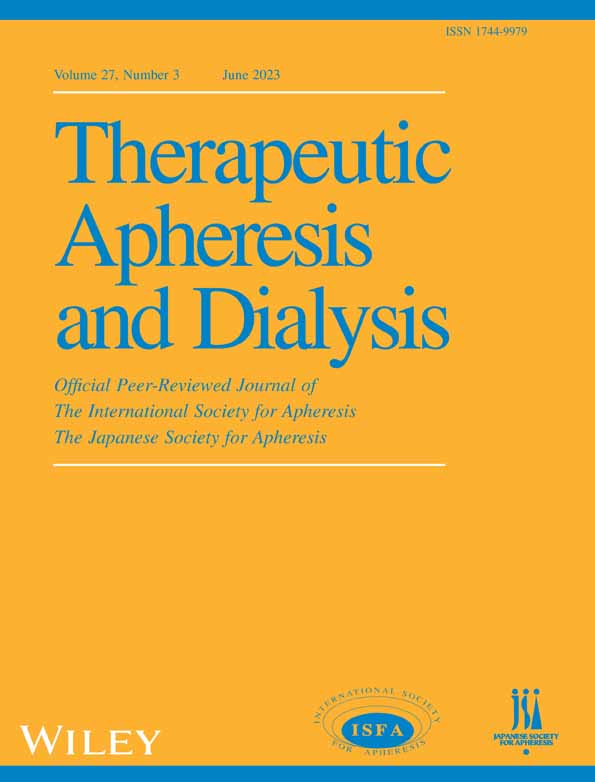Characteristics of pediatric continuous renal replacement therapies in hospitals with pediatric intensive care units in Japan
Abstract
Introduction
Information on the implementation of continuous renal replacement therapy (CRRT) in pediatric intensive care units (PICUs) is limited. We investigated the real-world practice of this therapy in Japan.
Methods
We conducted a cross-sectional survey of 26 hospitals with PICUs in Japan. One physician per hospital responded to the questionnaire.
Results
Fewer than half of the hospitals followed the CRRT practice guidelines; treatment options were often selected at a physician's discretion. PICUs varied widely in continuous renal replacement settings, circuit priming methods, frequency of circuit exchange, and policies for using CRRT in sepsis. Only two anticoagulants were used: nafamostat mesylate and unfractionated heparin. Most units did not change the nutritional dosage according to CRRT use. Many facilities were proactive concerning rehabilitation.
Conclusion
Nafamostat-centered anticoagulation management was unique to Japan. Our results may help identify areas where additional clinical studies are needed to standardize CRRT practice.
CONFLICT OF INTEREST
The authors declare no conflicts of interest associated with this manuscript.
Open Research
DATA AVAILABILITY STATEMENT
The data presented in this study can be shared by the corresponding author upon reasonable request.




